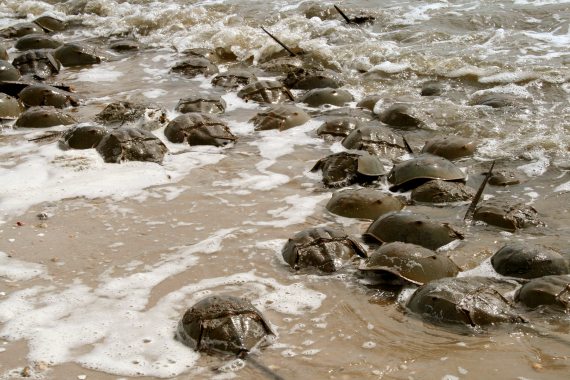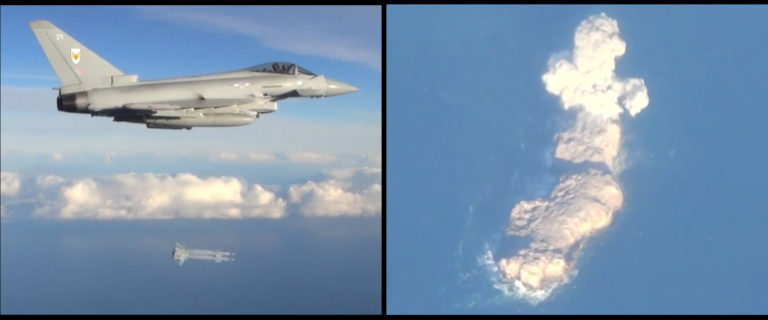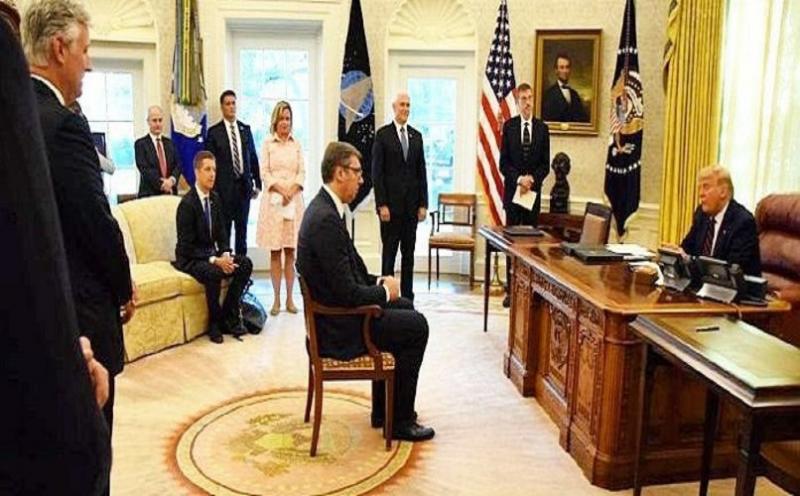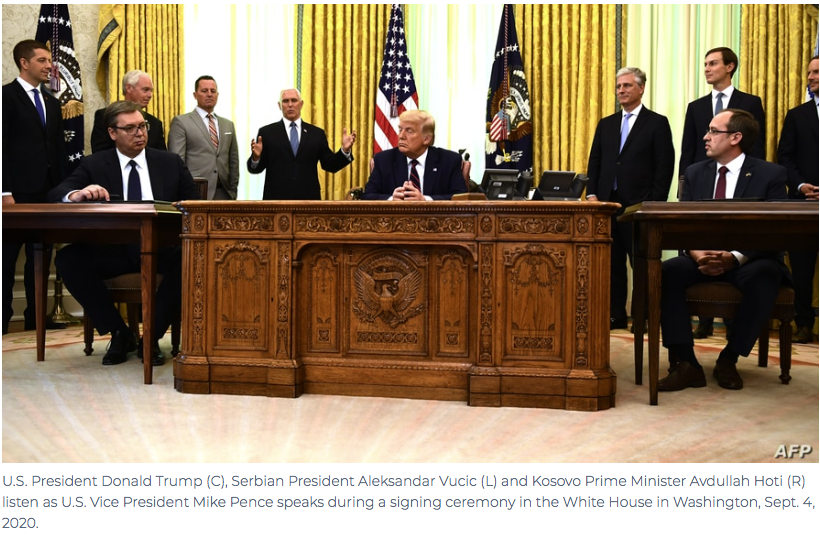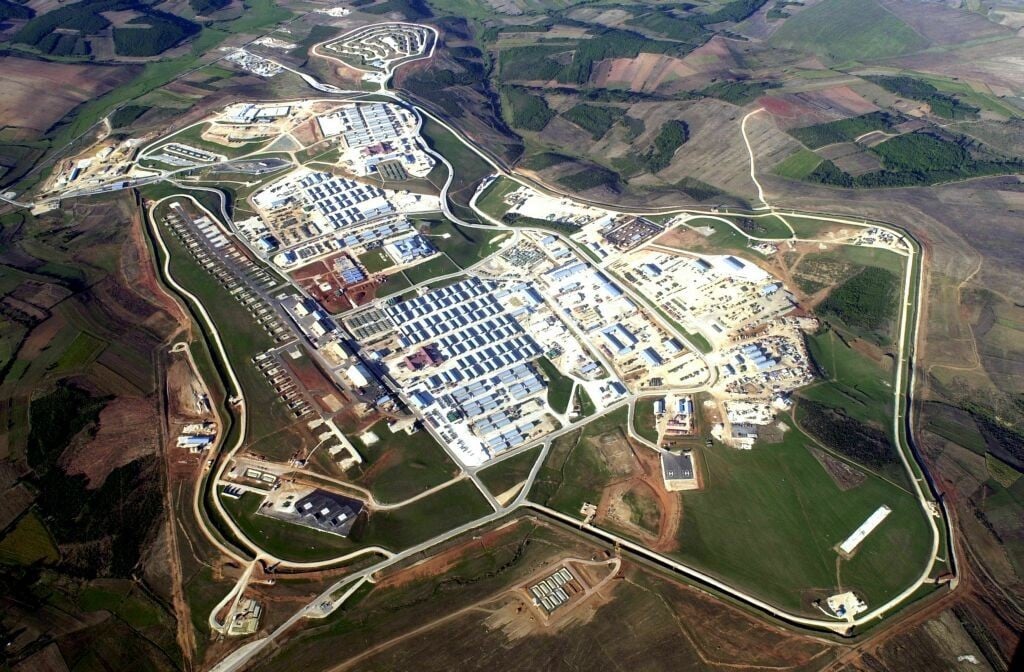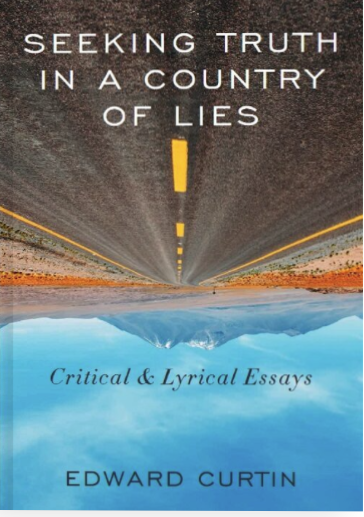I am posting below a long interview with Konrad Stachnio on wide-ranging questions, which stretched by knowledge past its breaking point, especially in assessing where the technological innovations on the horizons will lead us. It is one of 17 conversations published by Clarity Press under the title, Civilization in Overdrive: Conversations at the edge of the Human Future.
I recommend the book strongly. It can be ordered here.
***
“If a digital Fukuyama tells the world that ‘the end of history’ has been reached, he should be scorned this time around.”
KONRAD STACHNIO: Do you know what is the role of the so-called Black Budget in building the power of the USA as a global security state?
RICHARD FALK: It is not possible for someone without access to highly classified materials to assess accurately the policy significance and content of the Black Budget in the years since 1945, including the financing of a range of intelligence activities and a variety of covert intervention projects. It is possible to put forward the view that the CIA and special operations forces are both partially financed by the Black Budget that has been integral to the formation and execution of American grand strategy since the end of World War II, building its unaccountable claims on government spending for global security as a byproduct of Cold War imperatives. The Black Budget has, above all, provided a cover for unlawful encroachments on the sovereign rights of foreign countries, mainly those of adversaries, but also extending to thwarting leftist political movements from controlling governments in countries whose foreign policy was under the tutelage of the United States. The Black Budget has also evidently been used to keep secret the financing of the research and development of new weapons and surveillance technologies. As with other bureaucratic innovations, the removal of an original justification for an undertaking does not easily lead to its abandonment or even downgrading, especially if shielded from scrutiny by its secrecy and related non-accountability. In this respect, although the size of the Black Budget steadily grew as one side effect of the Cold War, its ending in the 1990s did not lead to reduced appropriations.
Most modern states finance their secretive activities through some form of “Black Budget.” What distinguishes the U.S. Black Budget is its scale, global projection dimensions, and integration into an overarching design for establishing and maintaining a global state, and its ties to unlawful policies and practices outside the domain of territorial sovereignty, and most of all, its linkages to sustaining the United States as the first “global state” in history. It is not just a matter of its planetary interpretation of American security, but of its subsuming under the banner of security a wider hegemonic agenda of economic dominance, cultural hegemony, and ideological influence. There is no serious pretension that after the Cold War the U.S. Government was taking over responsibility for global peace and security as envisioned in the Charter of the United Nations, although there was a brief claim to this effect in 1990–91 when the American president, George H.W. Bush, proclaimed “a new world order” based on UN authority and international law in response to defending Kuwait against Iraqi aggression. Such a claim was never subsequently repeated.

The idea of the U.S. as a global state is a geopolitical endeavor related to power and wealth rather than on any normative (based on law and morality) or cosmopolitan (meta-nationalist) conceptions of security. It is rationalized and justified by reference to national interests as measured by military superiority, economic advantage, alliance cohesion, and by the exercise of global leadership supposedly for the benefit of all humanity. The substantive priorities of the Black Budget are designed by American political realists who are by training and disposition distrustful of any loss of sovereign control over national policies and practices, are suspicious of the UN and international law, and seek to validate foreign commitments by reference to the promotion of national interests.
There is every indication that the Black Budget has been over the years “bipartisan” in the sense that it receives equal support from the U.S. Congress whether the occupant of the White House is a Democrat of a Republican. This bipartisanship extends to overall support for the defense budget and for a capitalist approach toward financial and labor markets, environmental protection, and corporate regulation. Donald Trump was opposed by part of the national security establishment when he sought the presidency in 2016 because he was perceived as a threat to this bipartisan consensus, and especially the commitment to maintaining control over a global security system. Trump did challenge aspects of the consensus, but when it came to militarism there has been no rupture since he entered the White House. The Black Budget has been rising during his presidency, reaching $81.1 billion in the last fiscal year, suggesting that Trump, despite withdrawing from economic, humanitarian, and environmental internationalism and asserting a belligerent brand of chauvinistic nationalism, is not willing to dismantle the American state apparatus of global surveillance, secrecy, and control, and even more tellingly, to abandon the network of overseas military bases, the far flung naval presence in the world’s oceans, and even the militarization of space.
Underlying questions arise as to whether the Black Budget of the United States and others is an inevitable implication of the military technology now available to many states, its range and accuracy that overcomes distance and time, precluding targeted states from defensive responses to threats. These conditions create multiple vulnerabilities of societies throughout the world, however powerful, to subversive violence from within and transnational violence from without, making readiness for war a permanent feature of political life. The global security state is reinforced by a trend toward autocratic national leadership throughout the world. It is important to associate the Black Budget with both innovative military software and hardware as well as with the surveillance/secrecy impulses of governance at the national, regional, and global levels of political organization. More concretely, the threats of terrorism and more recently, of contagious disease, give surface rationalizations for security capabilities that penetrate the most private activities of citizens as well as the secret undertakings of foreign governments, whether friendly or not. Such technologically driven circumstances bearing on the shrinking of time and space, if correctly and humanely interpreted, would encourage rapid shifts in emphasis and ideology from national and militarized security to human and ecological security. There are no signs that this desirable shift is happening, and so the roots of militarism grow deeper into the soil of political life in all its operational contexts.
KS: Are we currently entering the era of global digital dictatorship? Over those who colonize other countries technologically as well as on those that are colonized?
RF: I am not convinced that the core reality of this epoch will be shaped by “digital dictatorship,” and I am not entirely sure what is meant by the term. There seem to be contradictory tendencies arising from digitization, providing pathways to both domination and autonomy. It is true that vulnerability to cyber-attacks will give potential dictatorial control to the more technologically sophisticated political actors, but to what ends is impossible to anticipate, as well as what counter-moves might be taken by less digitally sophisticated states. There are also possibilities of non-state actors acquiring control or neutralizing capabilities with respect to such technologies. I suspect that the greatest dangers will arise at the interface between artificial intelligence (AI) and robotics, with drones already prefiguring such militarized applications of digital technology. As with other weapons innovations, it is not at all clear that political outcomes will be determined by military superiority. The historical novelty of the anti-colonial wars of the last century was that they were won by the side that possessed inferior military capabilities. There is as yet no evidence that digital technologies will be able to impose stable dictatorial governance at home or compliant colonies abroad. The dynamics of national resistance must be taken into account. What could happen is a weakening of the legitimacy and effectiveness of the state-centric world order, which has dominated the international scene since the Peace of Westphalia in 1648. Digitization could result in new configurations of authority and power, mergers of weaker and more vulnerable states to augment postures of digital anti-colonialism.
The near future of geopolitics may be shaped by the agendas and undertakings of the two global states, U.S. and China, the former declining, the latter ascending, and poised for rivalry, if not confrontation. The dynamics of their interaction is likely to shape the geopolitical structure of world order, at least for the remainder of the first half of the 21st century. Which of these two global states comes to possess superior mastery of digitization may give a clue as to how this rivalry will play out historically, but still may not reveal whether digital dominance will be translated into usable forms of geopolitical leverage or transnational structures of political dictatorship both within sovereign territory and within the sovereign domains of foreign countries or regions. For the foreseeable future there will be a variety of intensifying tensions between the territorial dimensions of authority and the non-territoriality of influence and behavior. At present, autocratic nationalism is obstructing transnational flows of people (walls at militarized borders, anti-immigration policies and practices), capital (retreat from neoliberal globalization), and goods and services (trade wars, sanctions). What the prospects are for digital internationalism, especially if hegemonically motivated, remains obscure.
KS: Will the new apartheid of our time be division into people who are “technologically enriched” (through, for example, embedded microchips or gene editing, thus being more adapted to the technological environment) and those who do not have these embedded enrichments?

RF: At present, the clearest historical examples of apartheid involve race and nuclear weaponry, although the structures of domination and victimization are specific to each instance in both categories. The idea of apartheid derives from South Africa’s racist political regime of a white minority imposing its exploitative will on a large black majority. It has been applied in two different ways to Israel’s control over Palestine: territorially by reference to Israel’s occupation policy as implemented in the West Bank since 1967 exemplified by applying Israeli law to Jewish settlers and military administration to the Palestinians; ethnically by reference to Palestinian people whether living in refugee camps in neighboring countries or as involuntary exiles, or in pre-1967 Israel as a minority in East Jerusalem, or in Gaza under occupation. This is a dynamic of ethnic domination that generates structures designed to subjugate the Palestinian people as a whole, however dispersed, and not as in South Africa under the territorial control of the Afrikaner government.
Nuclear apartheid relates to the Nonproliferation Treaty and its implementing geopolitical regime. Despite treaty provisions calling for nuclear disarmament as urgent priority, the existing nuclear weapons states retain possession, development, and deployment options while other states are prohibited from acquiring the weaponry even if possessing convincing security reasons for gaining a deterrent capability (as could be argued on behalf of Iran), and risk an aggressive regime-changing intervention if perceived as seeking to cross the nuclear threshold. This provided the rationale for attacking Iraq in 2003. In effect, the five permanent members of the UN Security Council are the self-appointed custodians of the weaponry, and all others are subject to an unconditional prohibition relating to their acquisition and possession, and selectively subject to geopolitical enforcement. Various exceptions to the prohibitions exist, including Israel, India and Pakistan, and more ambiguously for North Korea.
The prospect of a technological apartheid is situated somewhere between envisioned scientific capabilities and science fictional fears (e.g. of designer genetics; mass produced clones or warrior robots) and dreams (e.g. of eternal life, perfect health, and supplanting God as the master of the universe). There is a great deal of uncertainty as to whether countries that are geopolitically dominant in the world will also be able to control the frontiers of technological innovation in a number of areas. Religious scruples and legal prohibitions might also dissuade a political actor from acquiring those technological capabilities that are premised on hegemonic control, exploitation, and victimization. Unlike apartheid as an international crime, the metaphoric suggestion of a technologically based apartheid, is not based on race or religion, and therefore the emotive relevance of the allegation of apartheid seems less justifiable. Nuclear apartheid is metaphorical but it is premised on clear demarcation lines between having and not having the weaponry, although the distinction is blurry with respect to countries such as Japan and Germany that have the technological capabilities to become a nuclear weapons state in a matter of months. Unlike the racial and religious forms of apartheid, its metaphorical extensions do not have clearly identifiable boundaries of inclusion and exclusion. Despite its lesser technological capability to cross the nuclear threshold, Iran is treated as a greater threat to the nonproliferation regime than is Germany or Japan.
Against this background, I am not sure that “technological apartheid” is a helpful way of distinguishing between beneficiaries and victims of various technological innovations. Class may be the biggest divider as it has been for many devices associated with the digital age. The impact of technology on state/society relations via face recognition surveillance is another dimension of hegemonic control, but again a thin application of the apartheid metaphor as the markers of differentiation are unclear and contested. Unlike “nuclear apartheid,” which considers a single menacing technological sector, the projection of “technological apartheid” projects technological domination across the spectrum of human concerns, which somewhat characterized the colonizing period following the Industrial Revolution, which gave Europe control over both military hardware and navigational maneuverability.
It may be timely to worry about “digital dictatorship,” and I am sure its attainment is on the secret long-range operational investigations of geopolitical actors, both to avoid being left behind and potentially subjugated, as well as to achieve a controlling upper hand.
KS: How do you perceive the future of Fatah and Hamas?
RF: It is a difficult time of challenge for the Palestinian struggle, which casts a dark cloud of uncertainty over the future of both Fatah and Hamas. This uncertainty pertains, especially, to Fatah, which provides the main organizational underpinning for the Palestinian Authority that has represented the Palestinian people on an international level ever since the Oslo Framework of Principles was agreed upon in 1993. This framework presupposed a negotiating process that was widely expected by the UN, governments, and the general public to be committed to the establishment of an independent Palestinian sovereign state on the territory occupied by Israel since the 1967 War. This solution was accepted internationally, giving rise to the two-state consensus on how the conflict between Jews and Palestinian Arabs could be resolved and the competing claims of self-determination accommodated.
If the formal annexation of a substantial part of the West Bank takes place in coming months it will not only be the final nail in the two-state coffin, but also draw into question the viability of the Palestinian Authority as the voice of the State of Palestine. There are other relevant arenas that give the PA a rationale for a continuing existence, especially if it can find alternate funding for its rather elaborate governmental structures, including the pursuit of its grievances in the International Criminal Court, but most of all, by taking advantage of the situation to seek joint and unified leadership of the Palestinian struggle and arrange more authentic representation in international arenas, which would involve bringing Hamas in from the cold. The representation of the Palestinian people has been weakened by the persisting inability to obtain sufficient political unity to establish legitimate leadership of the Palestinian struggle for rights. Israel has contributed to this Palestinian diplomatic weakness by its continuous efforts over the years to keep the Palestinian movement factionalized and the Palestinian people ideologically, geographically, and diplomatically fragmented.
Hamas, in contrast to Fatah, and the PLO, has never endorsed the two-state approach as a tenable basis for reaching a sustainable peace between the two peoples. Hamas has challenged the underlying legitimacy of the Israeli State, and its exclusivist claims to be the State of the Jewish people. In recent years, following the electoral successes of Hamas in Gaza in 2006 and its takeover of governance from Fatah in 2007, it has claimed and controversially exercised a right of resistance, but most characteristically in defensive and retaliatory modes, and not as a strategy of liberation through armed struggle. Hamas has also negotiated, usually by way of Egypt, several short-term ceasefires with Israel, and in recent years, has proposed publicly and by back channels long-term ceasefires, including in a proposal for a 50 year ceasefire, although conditional on Israel lifting the blockade on Gaza and withdrawing to 1967 borders, an action long ago unanimously prescribed in UN Security Council Resolution 242.
Hamas also apparently reached out by discreet diplomacy to the Bush presidency in the years after its electoral successes in 2006 to exert pressure on Israel to agree upon some kind of long-term pause in hostilities with respect to Gaza. Yet neither Israel nor the United States, nor the PA, seemed at all interested in any kind of accommodation with Hamas if it did not include a recognition of the legitimacy of the Israeli State and a renunciation of any Palestinian right of resistance. It should be remembered that the U.S. Government had encouraged Hamas to participate in the 2006 elections, to shift their behavior from a reliance on armed struggle to the pursuit of its goals on a so-called “political track.” It was believed at the time that Washington assumed that the people of Gaza would repudiate Hamas, and this would solidify the political control of Occupied Palestine under Fatah influence and control, which was viewed as more moderate in relation to both means and ends. When these expectations were frustrated, the U.S., together with Israel, refused to treat Hamas as a legitimate political actor. Hamas was blacklisted as a terrorist organization that engaged in unlawful violence, pointing to the rocket attacks directed at Israel following the Israeli “disengagement” from Gaza in 2005, which involved withdrawing IDF troops across the border and dismantling the Israeli settlements. The time line between Israeli provocation and Hamas retaliation remains contested, and hard to unravel and. resolve, but what seems evident is that the Hamas provocations were indiscriminate, yet doing far less damage and being much less intrusive with respect to the Israeli civilian population than did the Israeli attacks and indirect control mechanisms continuously imposed on the people of Gaza often in the form of harsh collective punishment prohibited by Article 33 of the Fourth Geneva Convention.
It is now difficult to tell whether various developments in the present context will bring about any changes relevant to Fatah and Hamas. It is possible that Israeli annexation of large portions of the West Bank will give rise to renewed and more successful efforts at achieving political unity among Palestinian political factions. Given the failure of several past attempts, it would be irresponsible to predict success for such an effort, although a sustainable achievement of political unity with respect to representation, leadership, and the tactics of struggle would be a very favorable development from a Palestinian perspective, improving prospects for some sort of eventual political compromise. The issues facing the Palestinians have taken several turns for the worse in the last few years, principally due to overt and unconditional support given to unlawful Israeli expansionism by the presidency of Donald Trump and shifts in the regional balance as a result of Arab priorities now emphasizing the rivalry with Iran as to regional supremacy and an accompanying willingness to abandon support for the Palestinian struggle. For Israeli politicians, there is present the window of opportunity provided by Trump’s unconditional support of Israeli ambitions, but this window could close, at least part way, if Trump loses to Biden in November. Similarly, unrest in the Arab World could at any point lead to a second phase of the Arab Spring, possibly bringing to power a leadership in either Egypt or Saudi Arabia more responsive to renewed solidarity with the Palestinian struggle. How Fatah and Hamas will relate to such future developments remains a black box at present. Also, whether the experience of the COVID-19 health crisis alters Palestinian priorities relating to their political alignments, agenda, and tactics is impossible to discern at this stage as is its impact on the regional and global play of relevant geopolitical play of forces.

KS: Will Hezbollah become the biggest threat to Israel in the future? Because of military training in Syria and the weakening role of the U.S.?
RF: My understanding of these issues is limited. Although Hezbollah has had the benefit of battlefield experience in Syria, I think this enhanced capability would be relevant more to discourage Israel from repeating its 1982 ground inducing Israel to withdraw in 2000. I believe that Israel is mostly concerned at present about Hezbollah’s augmented defensive and retaliatory capabilities if Israel were to launch the kind of land invasion that culminated in the siege of Beirut that occurred almost 40 years ago. It is my understanding that Hezbollah has acquired accurate long-range missile capabilities that could cause heavy damage to Israeli cities, but if used offensively, it would likely bring about a disproportionate Israeli response with ruinous consequences for Lebanon. Hezbollah has demonstrated its capabilities to maintain a sustained campaign of territorial resistance, and possibly possesses a sufficient deterrent capability to discourage Israel from mounting an aggressive military campaign even from the air and sea. Overall, with the internal strife and tensions experienced by Lebanon in recent months, and still unresolved, Hezbollah seems to have become a weaker political actor in the internal Lebanese balance of forces, and highly unlikely to take any initiative that would provoke Israel to take major military action. An aspect of Hezbollah’s apparent political decline in Lebanon is the perception among the Lebanese people that Hezbollah became too close to Iran, which funded its activities and was a principal supplier of its advanced weaponry.
KS: How do you see Europe’s future in the context of Islamic fundamentalists returning to their home countries in Europe after the defeat of ISIS?
RF: Much depends on whether the “victory” over ISIS as projected is seen as the end of the story. If perceived as only a pause in violent challenges directed at Europe, or even with uncertainty as to the future, there will be public hostility to readmitting such individuals, especially former ISIS fighters. ISIS was itself a reaction to the U.S./UK occupation of Iraq after 2003, suggesting that such fundamentalist responses can arise whenever civilizations clash, and particularly when the West seeks to assert control over the political life of a non-Western society in the post-colonial era.
Against this background, the repatriation of ISIS fundamentalists is a very difficult issue to speculate about, and is likely to reflect diverse national policies that are put in practice rather than a common European Union approach. The treatment of ISIS applicants for reentry will likely depend on whether the vetting process will be willing and able to draw reliable distinctions between hardened militants and disillusioned recruits, and how families of ISIS fighters will be viewed in the overall context. It is likely that most European governments will be reluctant to issue visas to those ISIS families who are without valid passports, yet seek to return to their native countries. There are issues associated with uncertainty as to how particular individuals participated
in ISIS, what sorts of connections they have with their families in Europe, what job opportunities would await them, what effects their repatriation would have on domestic political tensions. Some of these issues are explored fictionally, with great intelligence, by Kamila Shamsie, in Home Fire (2017). My guess is that there will be a great reluctance by most European governments to permit the return of anyone closely associated with ISIS, and over the age of 18. A problem of their statelessness is likely to emerge.
KS: Would you agree with the statement of Chris Hedges that currently the only way to survive as human beings is disobedience to the elites?
RF: I think there is provocative value in taking seriously this injunction from a commentator on the current scene who is as thoughtful and justice-oriented as is Chris Hedges, and yet to serve as any guide to action, or even as a source of reflection, there is a need for greater particularity. Such a general call for disobedience is vague, and dependent on interpretation within a great variety of contexts. We need to know far more clearly what Hedges means by “survive as human beings” and by “disobedience to the elites.” Is it a call for the defense of human dignity against the state by establishing appropriate and effective forms of resistance? Is resistance limited to nonviolent tactics or does it depend on the context? Is the primary concern here with the word “human” (as in the quality of life) or with “survival” (as “bare life” in terms of subsistence)? Above all, is it a clarion call for the transformation or abolition of predatory capitalism and global militarism?
If we try to respond more concretely to Hedges based on personal perceptions and circumstances we will end up with a wide array of responses. From my perspective, I think Hedges is speaking within an American context, and delivering a central message that our constitutional democracy is faltering, and needs renewal by way of a movement of radical reform, possibly in imitation of the civil rights movement of the 1960s as guided by Martin Luther King, Jr.. In my darker moods I think even this degree of reformism is not sufficient, and that the challenges faced need to be conceived in the more activist framework of radical social action associated with the thinking and tactics of Malcolm X. Even in the somewhat less polarized times of the 1960s both of these charismatic leaders were assassinated, although King’s demands for access and equality became more fully realized and endorsed by elites than were the economic and social demands of Malcolm. Many might have thought that King’s vision was fully realized by the election of Barack Obama to the presidency in 2008, but such an assessment overlooked King’s anti-militarism and planetary humanism. These earlier expressions of semi-authorized “disobedience to the elites,” even when seemingly effective, can be reversed. The very success of anti-racism occasioned racist reactions, exemplified by the Trump presidency and the accompanying revival of a white supremacy movement to previously unimagined heights of influence.
If the idea of disobedience and resistance is directed at American militarism and foreign policy via a renewed peace movement, it evokes memories of the anti-war movement that became influential in the final years of the Vietnam War and in reaction to fears of nuclear war that emerged at various stages of the Cold War. Again, as with civil rights, short-term policy modifications were achieved, but the structures of militarism adapted, and regained control over policy and behavior in ways that resumed the old patterns only recently deemed unacceptable. Adjustments were made to remove the triggers that arouse popular opposition and unrest, but the structures of abuse are resilient, and can be imaginative in evading mandates for change. Militarists reestablished their influence after the Soviet collapse by exaggerating a range of security threats and identifying new enemies, exerting greater control over media coverage of war zones, and by professionalizing the armed forces and modernizing its tactics so that the politically sensitive draft could be ended. The justifications for inflated military budgets gained political support, and the former patterns of military intervention, thought to be discredited after the Vietnam experience, were re-stabilized.
Underlying Hedges’ call to action by citizens is his acute distrust of and opposition to the status quo, and his lack of confidence that political elites can be persuaded to adopt policies and programs that benefit the majority of American citizens, let alone humanity in general. National challenges, whether climate change, pandemics, or social justice, are not being properly addressed, and reliance on the traditional constitutional correctives of electoral politics seems to lack the vision and leadership needed. The critique of “choiceless democracy” strikes many of us as convincing given the absence of proposals for structural change by the major political parties. In this respect, an “extraordinary” politics of a people’s movement needs to challenge the established order of elites by embracing a transformative vision that transcends the “legal” channels of Congress and electoral politics to win its mandate for revolutionary change. Arguably, Bernie Sanders was somewhat animated by such an assessment of the political situation and recognized the need for movement politics more than trusting traditional electoral politics to get desired results. His goal of gaining the presidential nomination of the Democratic Party in 2016 and again in 2020 was fueled by the hope that the imbalances of society, dramatized by gross inequalities, would lead the DNC gatekeepers to permit entry to a candidate advocating the necessity of a certain amount of structural change. Despite his popularity as a candidate, Sanders’ defeat was a recognition that he posed too great a threat to the established order regarded as beneficial to the political and economic elites of both political parties to permit his candidacy. Sanders was seen as posing a structural threat, whereas Obama was not, despite the color of his skin. In this sense, race is less structural than capitalism, militarism, or even support for Israel in the current American scheme of things.
Keeping the focus on the American setting, the central force of Hedges’ outlook is to remind the citizenry that the party system will not generate the leaders or policies required to achieve necessary and desirable change. And feasible change is not enough, nor even durable, as Obama’s presidency confirmed. My own way of interpreting this condition of political closure at the policy levels of governance is to make reference to the “bipartisan consensus” that joins Republicans and Democrats on the most crucial policy issues of the day. This consensus emerged as the Cold War produced common ground between the mainstream elites of both political parties as a sequel to the politics of national unity achieved during World War II. The bipartisan consensus had three pillars that had ups and downs as to the extent and character of its leverage, but enjoyed basic continuity of support: (1) trust and deference to the priorities of Wall Street in managing the economy; (2) full funding of the military, diplomatic, and ideological infrastructure required to oversee global security by becoming the first “global state” to remain vigilant during times of peace and war; and (3) uphold the “special relationship” of unconditional support for Israel, with special implications for engagement and alignments in the Middle East.
The pragmatic and normative limitations of the bipartisan consensus have not yet shattered the Satanic grip of this marginalization of democratic choice. The idea of living in “a choiceless democracy” reflected the weight of the bipartisan consensus on the political life of the country. Donald Trump seemed to challenge this reality when a presidential candidate in 2016, but despite his assault on the post-1945 traditional verities of presidential leadership, the bipartisan consensus has been as powerfully implemented during his years in the White House as previously.
The pragmatic shortcoming of the bipartisan consensus is most vividly revealed in the consistent inability to translate military superiority into successful political outcomes. This is the great unlearned lesson of the last half of the twentieth century. Military superiority based on technological innovations and battlefield tactics lack their earlier capability of imposing Western dominance. The Asian resurgence of the last half century was based not on countervailing military capabilities but on superior economistic relations between the state and society, exemplified by China’s rise to ascendancy through mastery of the instruments of soft power expansionism. The West, especially the U.S., is entrapped in an outmoded and self-destructive militarist paradigm that no longer is capable of maintaining American geopolitical interests at acceptable costs, and is experiencing imperial decline due to the weakening of geopolitical morale at home and a dispiriting series of foreign policy defeats when relying on its military superiority. The crucial uncertainty is whether this dynamic of decline will at some point engulf the world in an apocalyptic war or whether the political will needed to reconstruct the geopolitical agenda along more constructive lines emerges as if by magic.
KS: Are we now at the end of the unipolar world and entering the multipolar era? Or are we rather heading towards a world completely centralized like never before in history by combining military power and technology? As we know, some countries in the Middle East where war was, and North Korea as well, do not belong to the Bank for International Settlements.
RF: In my view, the image of a “unipolar world” was a mistaken interpretation of world order after the Soviet collapse in 1992 that nonetheless correctly marked the end of the “bipolar world.” Such conceptual metaphors were based on the salience of the superpower military standoff and ideologically charged geopolitical rivalry that was at the core of the Cold War, especially as it played out in Europe. The limits of such metaphors should have become evident after the defeat of the United States in the Vietnam War, the defeat of the Soviet Union in Afghanistan, and the remarkable rise of China after the Cultural Revolution.
There was a period in the U.S. during the 1990s when neo-conservatives criticized the Clinton presidency for its reliance on an economistic geopolitics of neoliberal globalization at the cost of foregoing its earlier emphasis on a more militarist foreign policy. Neoconservatives were arguing that American foreign policy in the 1990s missed opportunities to take advantage of the removal of the Soviet Union from the geopolitical equation by recognizing the unipolar moment of military dominance as a window of opportunity to extend the reach of its global security system, especially urging “democracy promotion” schemes in the Middle East to be achieved if necessary by forcible intervention. This triumphalist atmosphere was epitomized by Francis Fukuyama’s insistence that the defeat of the Communist challenge was tantamount to reaching the end of history. Such an illusion was soon shattered forever by the 9/11 attacks on the Pentagon and World Trade Center, although these attacks were the apparent work of a non-state actor with minimal military capabilities, and no sovereign territorial base, thus eroding the major premise of state-centric world order.
Trump’s seeming retreat from the U.S. role as global leader has been evident since 2017. Trump made this point by over and over declaring himself elected president of America and not of the world, a message clearly signaling the end of any pretension of geopolitical unipolarity. This assessment was underscored by rising chauvinistic nationalism in many leading countries, which expressed a trend toward less hierarchical structuring of global security policy, more dependence on national self-reliance, less on multilateral alliances. After the Cold War, alliances played a much smaller role except possibly in Europe, giving world order a more statist character, which resulted in increased decentralization of international authority at the level of the state. Also, by and large, the global security agenda was far less concerned with great power competition than in earlier decades. Prolonged major violent conflict came to be preoccupied with the interplay in these countries of civil strife and regime- changing geopolitics (as in Syria, Yemen, Congo, Libya). It was also associated with transnational violence taking the form of the threats mounted by non- state actors (al Qaida, ISIS). In neither setting did the rhetoric of geopolitical polarization seem illuminating.
Perhaps, this will change with the waning of the global war on terror launched by the United States in 2001 after the 9/11 attacks. This dynamic is partly a reflection of the reduction of terrorist incidents in the West and partly the reenergizing of great power rivalry, with China now somewhat displacing post-Soviet Russia. Whether this rivalry will be perceived as a new phase of bipolarity is doubtful as the confrontation is not shaped, as was the U.S./Soviet standoff, by reciprocal threats of annihilation—partly because there is, at this stage, much less at stake with regard to ideological differences and also less emphasis on militarized conflict, alliances, and Europe, which was the former locus of direct confrontation. The U.S./China rivalry seems to be most intense around issues of trade and investment, with much less emphasis on the militarist preoccupations with defense of homeland, superior battlefield capabilities, containment, and competition with respect to new weaponry than was the case during the 45 years of U.S./Soviet confrontations. For this reason, it seems unlikely that the language of polarity will be relied upon to describe the new geopolitical alignment of principal adversaries on a global scale. To be sure, there are contentions, based on historical analogies, that China as an ascending great power is threatening to the United States in its role as preeminent great power, posing what Graham Allison has labeled “The Thucydides Trap” in a book bearing this title.
By projecting these concerns to the future, we do receive an impression of increasing multipolarity with respect to the world economy, taking the primary form of greater regionalization of trade, investment, and technological transfer. Whether this will produce a corresponding retreat from Bretton Woods and World Trade Organization frameworks, the institutional foundations of the American-led establishment of a rule-based liberal international order is not yet clear. If such a retreat occurs and is accompanied by a new wave of regional institution-building, it will lead to a new kind of multipolarity resting on the leveling of the technological foundations of power, having a depolarizing and equalizing impact, the opposite of the feared digital dictatorship and technological categorization of have and have not societies.
What can be said with reasonable confidence is that the language of unipolarity, bipolarity, and multipolarity is unlikely to be widely employed to describe the currently emergent central conflict patterns within global settings. Multipolarity as an alternative rhetoric to that of regionalization possesses somewhat greater relevance, although in contexts other than war/peace which had given rise to reliance on notions of bipolarity and unipolarity to capture the central feature of the Cold War. In this regard, future developments bearing on world order are most likely to be depolarized, either emphasizing global patterns of cooperation (climate change, biodiversity, global commons, migration, s) and statist patterns of self-reliance (border control, import substitution, restrictions on investment, trade barriers). In this respect, the near future of international relations seems most likely to resemble geopolitics of prior eras but in a technological environment dominated by transnational networking, automation, and digitalization.
KS: Would you agree with the statement that the control system in its nature is always analog and not Digital? Therefore, all Digital systems such as blockchain, Bitcoin, etc., can exist only until control is exercised analogously by the army? If any government wants to outlaw a given crypto currency, it can be done very easily, because in the last instance, control is always analog, on the ground, i.e. military force. Is therefore the concept of so-called “decentralization” a fiction?
RF: Yes, in the last analysis, so far as we know, the side that succeeds in controlling the armed forces in a revolutionary situation almost always determines the political outcome and exerts control over markets, including the authentication of currencies. This was one of Lenin’s greatest contributions to revolutionary thought. Digital modes of resisting and mobilizing can challenge the established analogic structures of control, and even gain temporary victories, but transforming these structures is often a very different story. This was illustrated rather spectacularly during the course of the Egyptian political unfolding of what was being called the Arab Spring in 2011, and seemed for a short period to signal the potency of digital agency through the dynamics of mass mobilization through the Internet on behalf of freedom and democracy. It did not take long for analogic forces to regroup under the aegis of armed forces and elements of the former Mubarak rulership in the bureaucratic setup, likely prodded and guided by external actors. In the end, the digitally powered challenge was brutally and effectively crushed. The political outcome restored a harsher form of repressive autocracy than what had been generated by the seemingly irreversible digital rising against the Mubarak regime of repression and elite corruption. Yet we still do not know for sure whether this return to autocratic governance will last. It is possible that future digital challenges will be mounted in ways that are transformative, as well as merely disruptive, and that such a movement will be alert and adept enough to defeat countermoves by analog forces seeking to regain control of the Egyptian state and society once again.
We need also to inquire whether the analysis of political conflicts can be usefully reduced to the analog/digital divide as it has operated up to now. Digital organizing has so far been ineffectual from the perspective of historical transformation, but this could change. As recent elections in the United States and elsewhere have shown, digital platforms are sites of struggle. Trump’s use of Twitter-fused digital agitation with analogic state terror as earlier pioneered by pre-digital forms of European fascism. It should also be kept in mind that digital activism is still in a rather primitive phase of development, and is being exploited by a wide range of extremist political movements on both the right and left, by libertarians as well as by anarchists and others dreaming of emancipation from analogic modes of control.
Whether or not digital politics has revolutionary and transformative potential is a matter that can only be resolved in the future. The uprisings comprising the Arab Spring were blocked partly because of organizational failings related to program and leadership, as well as due to its vulnerability to the pushback of political forces, which retained control of the apparatus of state power and never genuinely subscribed to the democratizing goals despite pretensions to the contrary. Lenin’s valuable insight rested on an understanding that a revolutionary movement could not hope to sustain a challenge to the status quo unless it smashed the old state, and reconstructed a new state in its image from top to bottom. Without any outward show of allegiance to Leninism, the Iranian Revolution of 1978–79 achieved its goals in ways that contrasted with the failures of the Arab Spring. The essential learning experience of this early phase of digital politics is that it is not enough to overthrow an autocrat unless there also occurs a drastic reconstruction of analog structures of control. In this respect, the tragic error of those who so bravely massed in Tahrir Square to demand the end of the Mubarak dictatorship was to accept the good faith of the institutions of Egyptian governance against which the masses had risen up in passionate resistance. This is not to ignore other factors at play, including above all the degree to which this spontaneous uprising heralded a new leadership under the aegis of the Muslim Brotherhood, which the secular supporters of the anti-Mubarak movement had grossly underestimated.
I remember having a meal with a Russian friend in Moscow during the early period of Gorbachev’s reformist efforts. His assessment bears on aspect of digital politics. He said we in Russia now have glasnost but not perestroika. He meant that now we can talk freely and critically, but we still lack the capacity to change the repressive and corrupt structure of the Soviet power machine. This will be the agency test for digital politics. Can digital transformative visions go beyond rhetoric and mobilized enthusiasm to get their followers to mount the barricades, at least figuratively? So far, the organized military, para-military, police, and propaganda capabilities and long experience of the analog world has prevailed, but the final interplay of this interaction awaits disclosure in the future. If a digital Fukuyama tells the world that “the end of history” has been at last truly reached, he should be scorned this time around.
For the present, although worried by the recent erosions of democratic governance, I would not foreclose the prospect of digital radicalism in forms capable of recovering revolutionary charisma. It is unlikely to resemble past radicalism, and is more likely to be a set of reactions to the bio-ethical crises of neoliberal modernity (climate change, biodiversity, migration, statism, militarism, inequality, alienation) than to reflect the growing influence of a digital proletariat faced with dark destinies of ecological collapse and worsening labor conditions in an increasingly automated future, perhaps accompanied by fears of species extinction. In this respect, overcoming the deficiencies of analog politics rests on a struggle in the domains of the unknown, forging a politics of impossibility that defies the expectations of think-tank gurus and societal life coaches.
We should have learned by now that the future is not only unknown and unknowable, but full of good and bad surprises, giving an edge of uncertainty and destiny to our individual and collective lives. To recall a few momentous examples, the outcome of colonial wars, the collapse of the Soviet Union, the transformation of apartheid South Africa into a multiracial constitutional democracy, the Arab Spring, the presidency of Donald Trump, the COVID-19 Pandemic—each seemed impossible until it actually happened, and was only anticipated by a handful of oddballs.
KS: Can Transhumanism be the new totalitarianism of our time after Nazism and communism? Previous totalitarian ideologies only wanted to change the social structure. The ideology of Transhumanism goes much further, wants to change the structure of life itself.
RF: There is no doubt that the totalitarian potential of Transhumanism is more radical than any previous political ideology, but is it a realistic prospect at this time? In theory, robotics, AI, and genetic redesign seem capable of producing whatever kind of being is sought after, whether creative genius or destructive monster, but will it happen? The time lines are difficult to discern, partly because the research and development of transhuman innovations are undoubtedly hidden in the black budgets of governments and the even blacker budgets of a variety of private sector actors, including rogue scientists and mad engineers, as well as the grandiose fantasies of eccentric billionaires and their underworld counterparts. There is money to be made, power to be achieved, and fantasies to be realized in these domains.
From one historical perspective, all that was possible by way of technological innovation relevant to power and wealth has been in the past actually developed. The most apocalyptic examples are drawn from the military realm. Weaponry of mass destruction and demonic manipulation of human behavior has long been the subject of secret research and development carried on without moral scruples or respect for legal and political restraints, including chemical, biological, and nuclear weaponry. The horrors of chemical weapons in World War I and atomic bombs and biological weapons in World War II created some pushback in the form of taboos, regimes of prohibition, and technical safeguards against accidental use, but research especially on the control of nuclear weapons during the Cold War has shown how precarious are these restraints, and the record of non-use, as documented in relation to the 1962 Cuban Missile Crisis, reflects luck more than it does the effectiveness of arrangements designed to avoid use. There is a race of sorts between perfecting spyware and surveillance technology and the efforts to transcend what were hitherto the limits of the human through the magic of technological innovation, including more and more sophisticated brain implants as well as the prospect of highly cerebral robots.
The threat of gangster Transhumanism has long been a central theme of science fiction, and now more recently with cloning and genetic manipulation becoming technically feasible, it has become an ambition of science and probably of individuals who seek absolute peace or total domination, with maybe some aspiring to harvest the fruits of artistic or scientific genius. It would seem that to preserve the human species as it has naturally evolved, including its mental qualities, urgent steps need to be taken to discourage some further technological developments, but whether this is practical in a politically decentralized world is doubtful. The fear that technology would create a dystopian reality for humanity is of pre-modern origins, and can be traced back to the Greek figure of Prometheus who stole “fire” from the Greek pantheon or Daedalus who crafted wings of wax and feathers for his son Icarus, whose flight led to the melting of his wings when he flew too close to the sun, sending him plunging toward earth. It was given a. powerful literary expressions in 1818 by Mary Shelley’s Frankenstein, and more recently in Aldous Huxley’s 1932 Brave New World. Transhumanist discussions are often dialogues between utopian expectations of life without end, prosperity for all, a Shakespeare in every household and dystopian fears of mass slavery under the watchful evil eye of technological elites or of a global dictatorship crafting policies in accordance with robotic algorithms.
Whether freedom can withstand either Transhumanism or the effort to con- trol the bio-technology, robotics, and artificial intelligence (AI) capabilities of the future without creating intolerable totalitarian surveillance and suppression is itself uncertain. There seems a likely circumstance where efforts to provide protection against the advent of Transhumanist forms of governance gives rise to an emancipatory political ideology. Contending that itself presupposes plan- etary domination. Such a liberating humanistic movement would likely under- mine freedom because of its unavoidable reliance on subversion, secrecy, and lawlessness to establish a political order that preserved the human and limited the relevance of the transhuman
Perhaps, Transhumanism should sever its imaginative ties with science fiction and lend support to more modest goals that do not purport to shake the foundations of the human condition. We are accustomed to life-enhancing technological innovations to improve health, fitness, and comfort without encountering many red flags. Although TV, smart phones, computing, and social media have raised concerns about sociability, the encouragement of passivity of lifestyle. and political pacification, as well as declining reading and writing skills, there is no movement to prohibit Transhuman expectations. The humanistic fundamentals of contingency, individuality, and mortality are not at risk. Designs and invention that allow us to live longer and better seems fine. The haunting question is whether our health and enjoyment and our collective existence as a species can continue to be improved without crossing the boundaries to the never-never land of technologies that transform our brains and deprive our lives of freedom, responsibility, mystery, and spirituality.
Perhaps, the best stance to take with respect to the Transhuman challenge is to apply the Precautionary Principle, which counsels extreme caution in the presence of incalculable risks of great harm. This Principle has been adopted in authoritative formulations bearing on climate change, and environmental risks more generally, but its implementation has been disappointing because government and the private sector are preoccupied by short-term performance and profits, and are not subject to accountability procedures when it comes to long-term harm, however foreseeable. It is one thing to welcome software that can defeat the best chess player the world has ever known, and another to genetically design or clone with the objective of eliminating creativity, resistance, empathy, and conscience. To discuss the dangers, while appreciating the contributions, neither rejects nor succumbs to the alluring promises and alarming pitfalls of Transhuman advocacy.
On the basis of my limited knowledge, the transition to an existential, as distinct from an imagined, transhuman future remains quite remote, although various technological advances are likely to arouse hopes and fears in the context of AI, robotics, genetic engineering, surveillance, and virtuality. There are already debates and dialogues about what it means to be human, as well as whether it is desirable and practical to prohibit certain forms of technological activity by national and international regulation. On the one side are life enhancing breakthroughs in health, education, entertainment, and communications, and on the other side are troublesome “improvements” such as the dehumanization of policing and warfare, through a reliance on drones, robots, bio-weapons, incapacitating chemicals, and the like. A serious concern is the lack of transparency with respect to research and development, as well as the agenda of “deep state” maneuvers seeking global domination and the possibility of rogue breakaways of varying scale.
KS: How do you perceive the future of Mega-cities? The Pentagon clearly states that this is the greatest military challenge of the future and that the strategies previously used in Iraq or Afghanistan are ineffective in mega- cities. In this context, how do you perceive the privatization of military forces serving international corporations?
RF: These questions relate to the fundamental nature of conflict in the 21st century, which tend to involve internal struggles for control of state power or tensions between states and extremist non-state actors. In both settings traditional means of waging war are rarely of decisive relevance if the principal sites of struggle become large urban conglomerates. Military superiority and battlefield superiority rarely any longer control the outcome of protracted conflict whether involving conflicts in the countryside or cities. This shift in the balance of power became clear, as earlier suggested, in anti-colonial wars in the 1960s and 1970s that were won by the militarily inferior side because it could mobilize popular resistance by appeals to national identity with dedication so strong as to be able to absorb heavy losses and outlast the “foreign” adversary.
Two categories of conflict are of particular interest. The first category involves a largely internal struggle between the state and an insurgency, which may have its base area in less accessible parts of the countryside. Such struggles often go on for decades, and if ended, it is usually by a negotiated agreement that represents a political compromise. This happened in the Philippines. and Colombia, but without addressing the roots of the conflict, and hence what was heralded as “peace” achieved nothing more than a ceasefire. The second category involves an internal struggle that also features military intervention by a regional or global political actor as was the case with the colonial wars of the last century and the geopolitical wars of the past twenty years.
The American experience in Iraq and Afghanistan illustrates this new reality, as does the strife in Syria and Yemen, in which the capability to destroy without limit does not lead to effective pacification of violent political resistance. The adversary can “hide” in the city, and resume the fight on another day. The foreign intervening power or the state is faced with the dilemma of prolonged insurgency and resistance or destroying a city, dispossessing and killing large numbers of civilians and devastating the city to the extent that it becomes an urban ruin as in Falluja or Aleppo.
The city is also filled with soft targets whose destruction can inflict fear and a sense of vulnerability on the urban population, and yet not dislodge the current regime’s elites. A permanent condition of insecurity does not usually lead to peace or change.
KS: How would you comment on the statement of the Italian writer Roberto Saviano, the author of the book Gomorrah, that now we are dealing more with clash of criminal mafia groups than a clash of civilization. According to Saviano, the European financial system (Liechtenstein, Luxembourg, London) is funded by the mafia’s money, where cocaine generates the same profits as crude oil.
RF: I think the transnational rise of criminal Mafia groups is a shadowy reality that is difficult to depict accurately, partly as a result of fuzzy boundaries between what is criminal and what is legal. The behavior of banks and corporations around the world cannot be separated from the activities of criminal syndicates. Even the relationship between crimes of states and private sector crime cannot be sharply demarcated, and many of their linkages are kept secret. Of course, Saviano as a writer has alerted us to the criminal penetration of the economic life of society in Mafia formats, but by treating the Mafia phenomenon as a particularly reprehensible feature of European modernity, we are exposed to the middle and lower-end of for-profit private sector operations. My main point is that predatory capitalism, through its alignments and standard operating practices, involves crimes against humanity and crimes against nature, and should be the central point of inquiry to gain a proper understanding of what has gone wrong in the contemporary world, including the dangerous disregard of ecological limits. We need to reformulate our understanding of the nature of “business” and the character of “crime.”
Whether it is useful to draw a comparison between the clash of civilizations and the clash of Mafia criminal groups can be debated. There is no doubt that comparing Mafia earnings with the revenue earned from oil sales catches our attention, but is it illuminating, and is it really true? As suggested, if the systemic distortions arise from the policies, practices, and logic of neoliberal capitalism, then focusing on the challenge posed by the Mafia underworld is mostly a distraction even if their abusive ways of dominating certain supply chains, e.g. drugs or garbage collection, is dangerous for human security. Maybe calling attention to the magnitude of the challenge will over time help people recover control over the social forces that demean and dominate so many societies in the world. Again, we have to ask whether the “legal” opioid crisis bringing billions to big pharma is worse than the trade in cocaine that lands its principal operatives in jail for life. Is this not a matter of lifestyle for different strata of the social and economic order?
KS: What can we, what will we learn from the COVID-19 pandemic? How can we explain the unexpected interim result of the pandemic as exposing American greater unpreparedness and incompetence in responding to the challenge than that of almost any other country? How will the opposed tendencies of overall species vulnerability and chauvinistic nationalist social control be resolved in a post-pandemic atmosphere? Will the experience of the pandemic incline governments toward great reliance on globalized mechanisms of problem-solving or toward a further retreat in the direction of ultra-nationalism and self-reliance?
RF: In the midst of this unprecedented COVID-19 experience, generalizations about what has happened and what is to come, should be put forward cautiously, and in a spirit of humility.

Several observations seem helpful points of departure. (1) Although there were some warnings about the likelihood of a lethal pandemic sounded in the last several years, they were not heeded by almost all politicians. (2) The COVID-19 outbreak was a grim reminder of the precariousness and vulnerability of contemporary life on the planet, and the deficient attention accorded to human security as distinct from national security, and as a result reinforced dire parallel warnings of ecological instability and potential collapse. (3) The degree of competence exhibited in responding to the health challenge reflected both the varying strength of national health systems and the uneven quality of national leadership, perhaps highlighted by the irresponsible and militarist style of autocratic figures such as Donald Trump and Jair Bolsonaro as contrasted with the impressively disciplined responses of such countries as South Korea, Taiwan, and Vietnam. (4) Even more than war, the COVID pandemic produced sudden and drastic economic and social dislocations that seem unlikely to be fully overcome even quite long after the health crisis has ended, if ever. (5) During the pandemic there was evident a clash between the logic of global cooperation, including granting resource and respect to the World Health Organization (WHO), and the divisive logic of autocratic nationalism, exhibiting the absence of empathy for the suffering outside the borders of the state, and in some instances, even for socio-economic sectors of the national citizenry.
Thinking ahead to imagine the consequences of the COVID-19 is, of course, beset by various levels of uncertainty. On one level it will make a great difference for the global response if Trump is reelected rather than replaced. If reelected, there will continue to be a leadership vacuum at the global level, and only the most cosmetic adjustments at the national level, at least in the United States.
It is to be expected that European countries that endured high rates of fatalities will remedy the deficiencies of their readiness to meet such health challenges in the future. Sweden is likely to rethink its permissive response in light of the number of fatalities relative to population size. In effect, those countries that did well in meeting the COVID-19 challenge are likely to reinforce their capabilities to do the same in the future, and those that did poorly are more likely to invest more heavily in their national health system if funding is authorized. Most governments are driven by short-term performance goals, which works against such health threats that are generally perceived as occurring beyond the normal political horizons of accountability.
If we extend our conjectures beyond health there are three broad lines of possible impact of the pandemic on the politics of the near future. First, there is what might be called a restorative approach that places emphasis and hope on getting back to the “old normal” without attempting social and economic reforms to address the disproportionate vulnerability of the poor and ethnically marginalized parts of society. In effect, capitalism and militarism will continue to provide the main organizing forces of world order. Political and economic elites can be expected to favor restoring the pre-pandemic realities, and in the process inadequately responding to the urgencies of the ecological policy agenda.
Secondly, there is the reformist approach that seeks a new normal that exhibits meaningful recognition of the need to address inequalities that deprive parts of society of an equitable share of national wealth and income, and make a concerted effort to create social harmony and ecological stability, which might be proclaimed “a social contract for the digital age.” While this might increase taxes on corporations and wealthy persons, it will not challenge the legitimacy or operational modalities of either militarism or capitalism. The reformist momentum is likely to vary from country to country, but in its more successful examples, it will soften the sharp edges of capitalist modes of accumulation and somewhat reallocate funds to welfare, infrastructure programs, and environmental priorities. This reformist approach is likely to win support from liberal elites in the West, especially if these elites become worried about the twin challenges of fascism and socialism to their values and self-interest.
And thirdly, the transformative approach directs its attention to the structural excesses exposed by the pandemic. It directs its energy toward reconstructing the economic and social order in ways more responsive to the issues of justice and equity, as well as addressing ecological challenges as prime threats to humanity. It is likely to seek a stronger UN as well as a political culture more respectful of international law. Transformative perspectives are likely to meet resistance from economic and political elites and find support from disadvantaged sectors of society expressing their discontents through a movement approach to political change that is skeptical of relying on electoral politics as a trustworthy source of authority. Whether the transformative movement emerges and sustains itself is currently unknowable, as is whether it would be expressed by way of left populism or through some kind of merger of national and transnational movements for a sustainable and just human future.
In conclusion, the COVID-19 pandemic will either be remembered by future generations as a notable global health emergency that once over, passed quietly without leaving a lasting imprint on world history or as an unexpected revolutionary moment that made previously unattainable fundamental political developments start to happen. The deeply flawed and contentious American response to the extraordinary health crisis took a further decisive turn in an unexpected direction in response to a video capture of the police murder of George Floyd on May 25, 2020 occurring in one of America’s most progressive cities, Minneapolis, Minnesota. There has not been such an earth-shattering lethal event since an angered and humiliated young street fruit seller, Mohamed Bouazizi, in an interior Tunisian town, set himself on fire to protest his hopeless socio-economic circumstances, leading to an explosive national and transnational outpouring of empathy, hope, and rage on city streets across the Middle East and beyond. As an occurrence comparable to a societal volcano, Bouazizi’s act of self-immolation on December 17, 2010 produced a national upheaval that not only ignited the Tunisian uprisings at the end of 2010 that led to the fall of the corrupt dictatorial leader Ben Ali, but inspired uprisings across the Arab world of masses of people chanting slogans against injustice, abuse of state power, and widespread corruption.
As with Bouazizi, the death of George Floyd, a previously obscure individual, inflamed public consciousness and illuminated and exposed the criminal cruelties of “law and order” governance. The unexpected results were riots, looting, and demonstrations that continued for many days in cities across the length and breadth of the United States (and spreading to many foreign venues), stimulating strident calls for an end to racism in all its manifestations, as well as defunding of police forces, and even their disbanding. Floyd’s last telling words, “I can’t breathe,” as a police officer kept his knee on his throat for more than eight minutes, 46 seconds, with three other policemen lending assistance while Floyd lay helpless and handcuffed on the ground, gave his death an unforgettable vividness, at once tragic and epic. Unlike earlier similar recent instances of police murder (including Michael Brown, Trayyon Martin, Eric Garner, Breonna Taylor) Floyd’s dying ordeal will not be forgotten, even as racism and injustice persists, and new provocations occur.
As might be expected, the events also magnified the polarization that has been the defining feature of the Trump presidency, with the leadership relying on law and order and the folks in the streets calling for an end to police brutality and, more generally, for greater equality with respect to persons of color in American society, especially African Americans as still suffering from some of the ugliest residues of slavery including being lynched by mobs or killed without reason or mercy by police who act confident of impunity, if coverups by police departments should somehow fail to hide their wrongdoing from any scrutiny. If the Floyd video didn’t remove reasonable doubts about the allegations of murder, there might have been a much more muted response. As it was, this incident occurred against the background of a series of recent police killings of innocent black men, making the call of Black Lives Matter this time resonate strongly even with many white middle class Americans who had previously been silently compliant, or at least passive when it came to police or criminal justice reforms. The highly charged present atmosphere emboldened Muriel Bowser, the embattled African American mayor of Washington, DC, who dared oppose Trump’s militarized responses to the protests, to have the words “black lives matter” painted in large bright yellow letters on an avenue passing close by the White House. It was akin to a declaration of cultural war against Trumpism, quite unimaginable a month ago.
The response to Floyd’s death was undoubtedly magnified by the social and economic societal trauma created by COVID-19, providing disoriented citizens with a worthy rationale for venting frustrations after weeks of prolonged self- isolation. Focusing on this racial incident offered the public temporary respite
from the more private anguish of lost jobs, bleak future employment prospects, and the deaths of friends and relatives. The sustained display of anger and solidarity over Floyd’s death amounted to an electrifying outpouring of massive grief and outrage, coupled with a growing antagonism not only toward the police, but also toward Trump’s lethal antics, and toward municipal, state, and federal authorities who have been speaking out against racism and promising reform for decades, but doing too little to bring about change. It should surprise no one that the atrocities keep happening and a badly broken criminal justice system has become a flourishing for-profit business.
The lingering question on the lips of many is: “what will come of this?” Will the momentum be strong and deep enough to lead American politics in a robustly progressive direction? Or will the system in place be able to wait out this interlude of storm and fury, and resume a relentless slide toward a fascist future for the country and ecological disaster for the world?
Racism in America has proved itself resilient and opportunistic ever since it was forced into hiding briefly in the shadows of political life after the American Civil War. We need to remember the racist torments of the Ku Klux Klan, White Citizen Councils, continued lynching, Jim Crow Laws, and the vicious tactics used against activists during the Civil Rights Movement. Will these current uprisings survive the storm after Floyd’s death to become a movement that is strong enough to avoid the recurrence of abusive behavior not just toward black Americans but toward all persons committed to the human dignity of all who share life on the planet and need to learn the art and benefits of peaceful coexistence? Will the current arisings lose their momentum while the old order regroups or even mounts a pro-police campaign? The months and years ahead will determine whether the country has a “soul,” and if has, what is its core reality?
We all know that what happens in the United States has multiple implications for the world. This is more the case in this instance as widespread anguish about Trumpist world politics occurred amid the pandemic igniting solidarity events in many of the world’s major cities, and worries spread about a second cold war between China and the U.S. as Trump irresponsibly shifted blame for American COVID deaths to Beijing, and even to the WHO. If the American election goes forward as scheduled in November 2020, Trump is defeated, and lets a new leadership take over, the international situation will likely appear somewhat calmer, but it will still be treading water with respect to racism, militarism, and predatory capitalism, devoting its main energies to overcoming the economic damage from the pandemic that has undermined the livelihoods and wellbeing of vulnerable people throughout the world. It is too soon to see a humane future for global governance on the political horizons of struggle, but it remains more reasonable than a while ago to recognize a renewed plausibility of drastic change, given a societal mood far more receptive to messages of resistance and transformation, and taking into account the severity of the mounting eco- bio-ethical crisis that is warning us not to settle for restoring pre-pandemic normalcy.
*
Note to readers: please click the share buttons above or below. Forward this article to your email lists. Crosspost on your blog site, internet forums. etc.
Richard Falk is a member of the TRANSCEND Network, an international relations scholar, professor emeritus of international law at Princeton University, Distinguished Research Fellow, Orfalea Center of Global Studies, UCSB, author, co-author or editor of 60 books, and a speaker and activist on world affairs. In 2008, the United Nations Human Rights Council (UNHRC) appointed Falk to two three-year terms as a United Nations Special Rapporteur on “the situation of human rights in the Palestinian territories occupied since 1967.” Since 2002 he has lived in Santa Barbara, California, and associated with the local campus of the University of California, and for several years chaired the Board of the Nuclear Age Peace Foundation. His most recent book is On Nuclear Weapons, Denuclearization, Demilitarization, and Disarmament (2019).
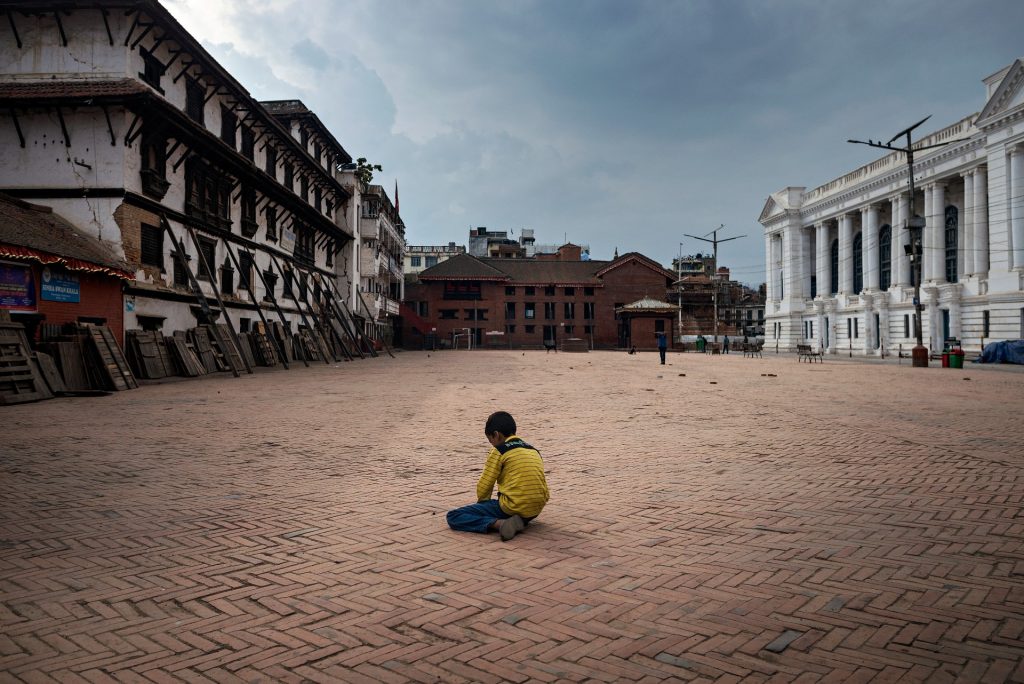

























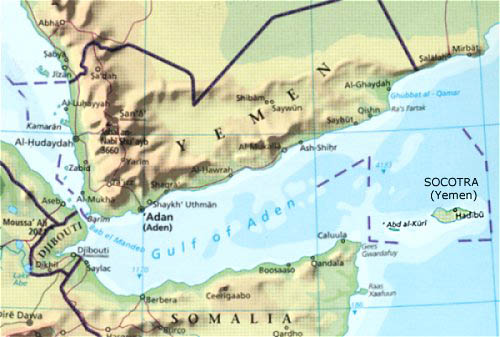
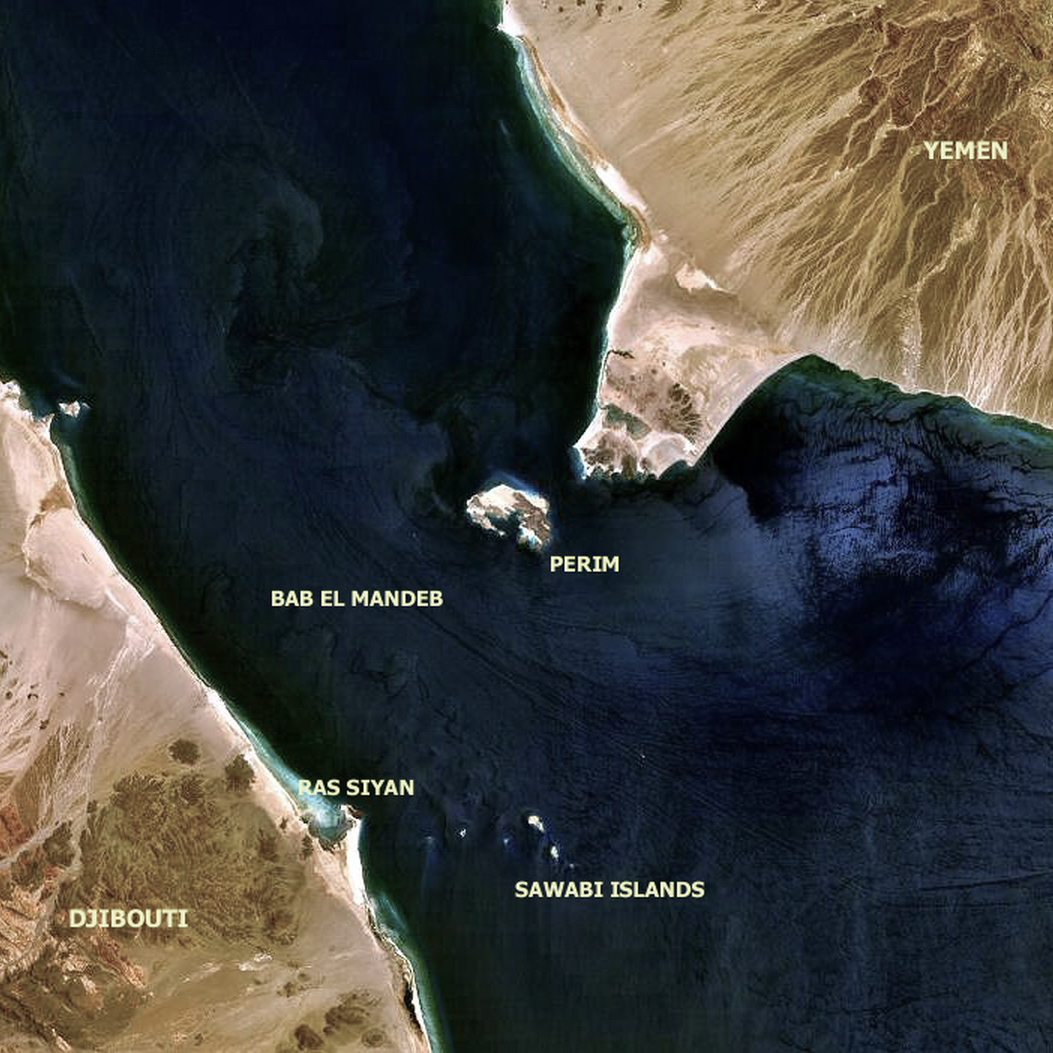
 Can you
Can you 








